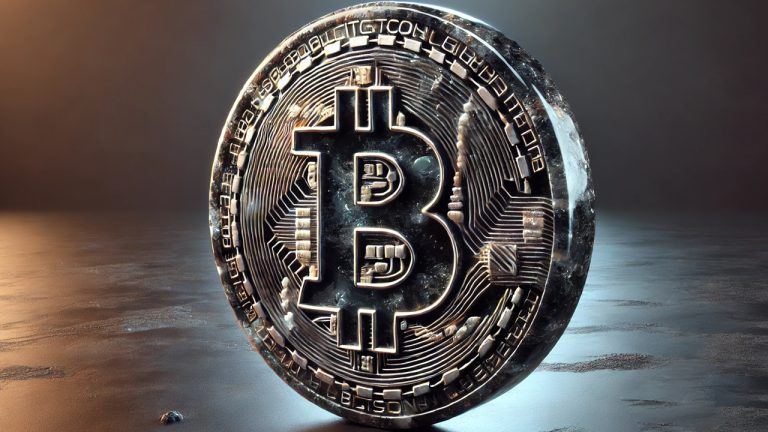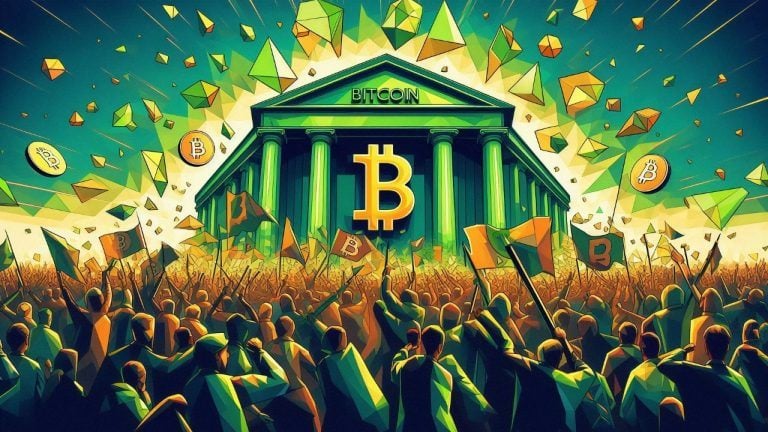The Revolutionary Rise of DeFi: Unlocking the Future of Finance
Discover the game-changing world of decentralized finance (DeFi) and its potential to reshape the financial landscape.
The world of finance is undergoing a revolutionary transformation, thanks to the rapidly growing field of decentralized finance (DeFi). This disruptive technology has the potential to completely reshape the traditional financial system as we know it. In this article, we will delve into the concept of DeFi, its evolution and growth, its impact on traditional finance, the potential risks and challenges it presents, and what the future holds for this exciting field.
Understanding the Concept of DeFi
Before we explore the intricacies of DeFi, it is important to establish a solid understanding of what it entails. At its core, DeFi refers to the use of blockchain and cryptocurrency technologies to recreate and decentralize various financial systems and services. By eliminating intermediaries and relying on smart contracts, DeFi aims to provide users with more control over their financial activities and assets.
Decentralized finance operates on the principles of blockchain technology. Smart contracts, which are self-executing agreements, play a pivotal role in DeFi. These contracts are coded to automatically execute transactions once certain predetermined conditions are met. This eliminates the need for intermediaries, such as banks or brokers, reducing costs and increasing efficiency.
The Basics of Decentralized Finance
Decentralized finance, commonly known as DeFi, is a revolutionary concept that has gained significant traction in recent years. It is an innovative approach to traditional financial systems, leveraging blockchain technology and cryptocurrencies to create a more open, transparent, and accessible financial ecosystem.
One of the key features of DeFi is the use of smart contracts. These self-executing agreements are programmed to execute transactions automatically when specific conditions are met. This eliminates the need for intermediaries, such as banks or brokers, and reduces the associated costs and delays. Smart contracts ensure that transactions are executed in a secure and efficient manner, without the need for trust between parties.
In addition to smart contracts, DeFi also relies on decentralized applications (DApps) to provide various financial services. These DApps are built on blockchain platforms, such as Ethereum, and allow users to interact with the DeFi ecosystem. They provide functionalities such as lending, borrowing, trading, and asset management, all without the need for traditional financial intermediaries.
Key Principles of DeFi
There are several key principles that underpin the functioning of DeFi:
- Openness: DeFi protocols are typically open-source, meaning that their code is available for anyone to inspect, use, and modify. This fosters transparency and allows for collaboration and innovation. Developers can build on existing protocols, creating new and improved financial services for users.
- Interoperability: DeFi applications are designed to seamlessly integrate and interact with one another, creating a cohesive ecosystem. This enables users to access a wide range of decentralized financial services using different applications. For example, a user can borrow funds from one DeFi platform and then use those funds to invest in another platform, all without leaving the DeFi ecosystem.
- Permissionless: One of the most revolutionary aspects of DeFi is its permissionless nature. Anyone with an internet connection can participate in DeFi, without requiring permission from any central authority. This empowers individuals who may not have access to traditional financial services, opening up new opportunities for financial inclusion and economic empowerment.
- Trustless: By leveraging blockchain technology and smart contracts, DeFi eliminates the need for trust between parties. Transactions are executed based on predefined conditions, reducing the risk of fraud or manipulation. This trustless nature of DeFi ensures that financial activities are conducted in a secure and transparent manner, without the need for intermediaries or third parties.
Overall, DeFi represents a paradigm shift in the world of finance. It offers a decentralized alternative to traditional financial systems, providing users with more control over their assets and financial activities. With its principles of openness, interoperability, permissionlessness, and trustlessness, DeFi has the potential to revolutionize the way we think about and interact with money.
The Evolution and Growth of DeFi
What began as an experimental concept has rapidly evolved into a vibrant ecosystem. In the early stages of DeFi, developers started building decentralized applications (dApps) that focused on specific financial services, such as lending or trading. These applications gained traction, attracting users and investors who recognized the potential of this new paradigm.
The Early Stages of DeFi
In the early days of DeFi, the primary focus was on decentralized lending platforms. These platforms utilized smart contracts to facilitate peer-to-peer lending, effectively removing the need for traditional financial intermediaries. This allowed anyone with internet access to borrow or lend funds without the need for a bank or credit institution.
One of the first decentralized lending platforms to gain popularity was MakerDAO. Built on the Ethereum blockchain, MakerDAO introduced the concept of collateralized loans using its stablecoin, Dai. Users could lock up their Ethereum as collateral and borrow Dai, which maintained a stable value pegged to the US dollar. This innovative approach to lending provided users with a decentralized alternative to traditional banking services.
As the popularity of decentralized lending grew, other platforms emerged to offer specialized services. Compound Finance, for example, introduced the concept of algorithmic interest rates, where the interest rates for borrowing and lending were determined by supply and demand dynamics within the platform. This allowed users to earn interest on their deposited assets and borrow funds at competitive rates.
Current Trends in DeFi
As DeFi continues to mature, we are witnessing the emergence of new trends and innovative solutions. Some of the current trends in the DeFi space include:
- Decentralized Exchanges (DEXs): These platforms enable users to trade cryptocurrencies directly with one another without the need for a centralized exchange. DEXs offer increased security and privacy, as well as reduced trading fees.
- Stablecoins: Stablecoins are cryptocurrencies that are designed to maintain a stable value by pegging them to a specific asset, such as the US dollar. These stable digital assets provide a reliable means of preserving value and facilitating transactions within the DeFi ecosystem.
- Liquidity Mining: Liquidity mining, also known as yield farming, involves providing liquidity to DeFi protocols in exchange for rewards. Participants contribute their crypto assets to liquidity pools, allowing others to trade against them, and earn passive income in return.
One of the most popular DEXs in the DeFi space is Uniswap. Built on the Ethereum blockchain, Uniswap utilizes an automated market maker (AMM) model to facilitate trading. Liquidity providers deposit tokens into smart contracts, allowing users to trade against these liquidity pools. This decentralized approach to trading has gained significant traction, with Uniswap becoming one of the largest decentralized exchanges by trading volume.
While Dai was one of the first stablecoins in the DeFi space, other stablecoins have emerged with different mechanisms for maintaining stability. For example, Tether (USDT) is a stablecoin that is backed by reserves of fiat currency, providing a 1:1 peg to the US dollar. On the other hand, algorithmic stablecoins like Ampleforth (AMPL) adjust their supply based on market conditions to maintain a stable value.
Liquidity mining has become a popular way for users to earn additional income in the DeFi space. Platforms like Compound and Aave offer liquidity providers incentives in the form of governance tokens. These tokens not only provide a share of the platform’s revenue but also grant holders voting rights in protocol governance decisions.
As the DeFi ecosystem continues to evolve, we can expect to see further innovation and the emergence of new use cases. From decentralized insurance platforms to prediction markets, DeFi is transforming traditional financial services and opening up new opportunities for users around the world.
The Impact of DeFi on Traditional Finance
The rise of DeFi has not gone unnoticed by traditional financial institutions. As decentralized finance gains traction, it poses several challenges and opportunities for the existing financial system.
Disruption in the Banking Sector
DeFi has the potential to disrupt the traditional banking sector by offering alternative financial services that are more accessible, efficient, and cost-effective. With DeFi, individuals can access services such as lending, borrowing, and earning interest without the need for a bank account. This threatens the traditional banking model, prompting banks to explore ways to adapt and integrate DeFi into their operations.
Changes in Investment Practices
DeFi has also revolutionized investment practices by introducing innovative concepts such as decentralized asset management and prediction markets. Investors now have the opportunity to invest in blockchain-based assets directly, without the need for intermediaries. This gives them greater control over their investments and potentially higher returns.
The Potential Risks and Challenges of DeFi
While DeFi holds immense promise, it is not without its fair share of risks and challenges. Understanding and addressing these concerns is crucial for the widespread adoption and continued growth of decentralized finance.
Security Concerns in DeFi
Due to the decentralized nature of DeFi, security vulnerabilities can arise. Smart contract bugs, hacking incidents, and vulnerabilities in the underlying blockchain infrastructure have led to financial losses for users. It is imperative for DeFi projects to prioritize robust security measures to protect user funds and maintain confidence in the ecosystem.
Regulatory Issues Surrounding DeFi
As DeFi gains popularity, regulators are grappling with how to effectively regulate this nascent industry. The decentralized and borderless nature of DeFi presents unique challenges for regulatory authorities. Striking the right balance between investor protection and fostering innovation is crucial to ensure the responsible growth of the DeFi ecosystem.
The Future of Finance: A DeFi Perspective
Looking ahead, the future of finance appears to be increasingly intertwined with DeFi. The potential of this technology is vast, with exciting developments on the horizon.
Predicted Developments in DeFi
Experts predict that DeFi will continue to expand and evolve, with more complex financial instruments and use cases being developed. Permissionless lending and decentralized insurance are just some of the areas where DeFi is poised to make significant advancements.
The Role of DeFi in Financial Inclusion
Perhaps one of the most promising aspects of DeFi is its potential to foster financial inclusion. By providing access to financial services for the unbanked and underbanked populations, DeFi has the power to empower individuals and communities worldwide. This inclusive nature aligns with the mission of many DeFi projects and is expected to be a driving force behind its continued growth.
In conclusion, DeFi represents a paradigm shift in the world of finance, unlocking endless possibilities for individuals and institutions alike. As this revolutionary technology continues to mature, it is important for stakeholders to collaborate, innovate, and address the challenges posed by decentralized finance. The journey towards the future of finance has just begun, and DeFi is at the forefront, leading the way.






